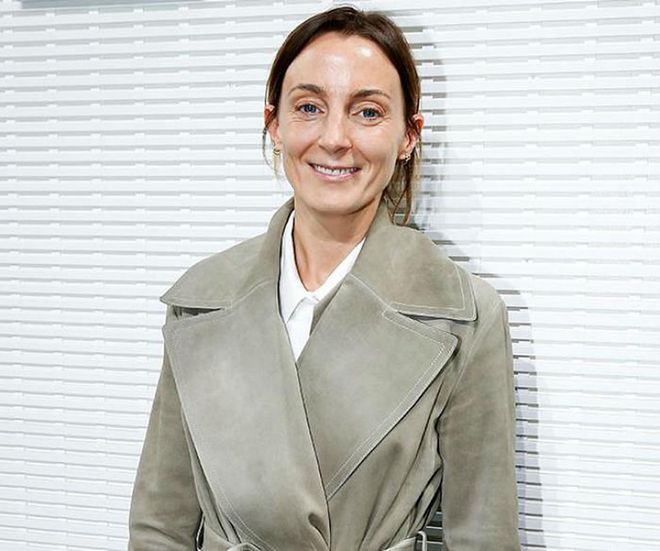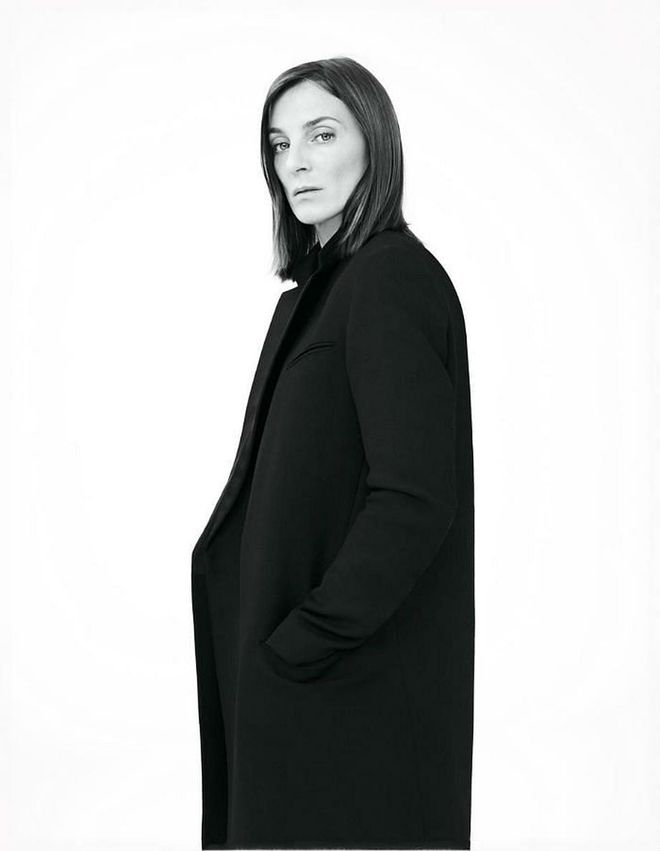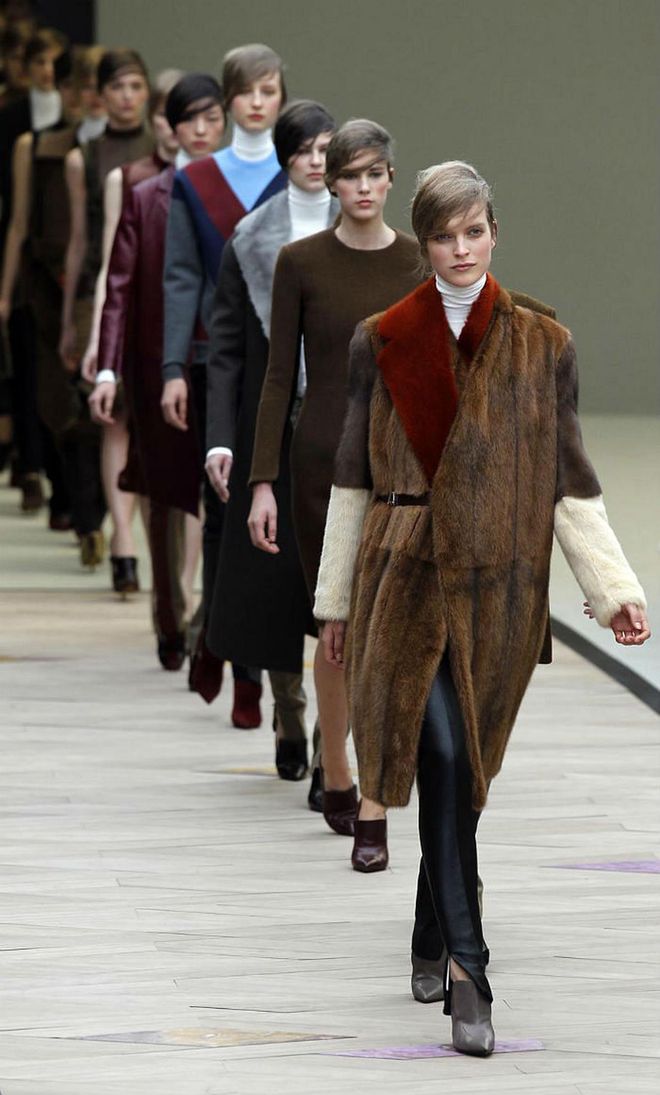The Rise Of The Philophile: Fashion's Most Nostalgic Fan Club
Phoebe Philo’s departure from Celine has inspired the birth of a very exclusive group


Photo: Getty
Phoebe Philo
When Phoebe Philo announced her departure from the French label Celine after 10 years as creative director last December, the fashion community went into a proverbial meltdown. The internet was awash with op-eds on how Philo had changed the way women dress, and people began madly stocking up on Philo's designs from second-hand websites (BAZAAR fashion editor Caroline Tran texted me: "What are we going to covet now?!") It's difficult to explain what Philo's departure meant to people without resorting to hyperbole, so let's stick to the facts.
During her tenure at the brand, the British designer transformed it into what is often described as "the fashion editor's fashion label". Philo didn't ride 2010's minimalism wave, she invented it. Brands such as Khaite, The Row, Rosetta Getty, Gabriela Hearst and Victoria Beckham (non-coincidentally, all brands designed by women) owe a great deal to Philo's impeccable eye.
It would be remiss in a tribute to Philo not to include the fact she was one of the few female creative directors at a top French fashion house. As a working mother (she has three children with her gallerist husband, Max Wigram), Philo imbued the clothes with a functionality and wearability. At Philo's Céline (the accent over the 'E' has now gone, more on which later), it never felt as if someone was guessing what women want to wear; the designer just knew. On the eve of her 2009 debut, she vowed to take fashion "back to reality" — to balance beauty in clothes with the demands of everyday life. All this goes some way to explaining why her departure left such a gaping hole in the industry. So, how to fill it?
Related article: 10 Of Phoebe Philo's Best Memorable Moments At Céline

Photo: Getty
Phoebe Philo
Celine's parent company, LVMH, had the difficult task of replacing someone who had spent a decade making themselves irreplaceable. It was a stroke of twisted genius when they abandoned any hope of finding Phoebe 2.0 and instead employed a maverick designer who stood for everything Philo didn't: Hedi Slimane. The appointment followed Slimane's gigs at Dior Homme (where he made his name; Karl Lagerfeld famously said he lost 41 kilograms to fit into Slimane's covetable suits) and Saint Laurent (a critically polarising but commercial success, with Slimane doubling Saint Laurent's profits in his first three years there and leaving in his wake an annual revenue of more than $1.4 billion). From LVMH, the message was clear: no cheap imitations; it's time for a new interpretation of the Celine brand.
Slimane's first move as creative director was to wipe the @celine Instagram account of any remnants of the Philo years. Viewers were quick to notice he had removed the accent from the logo — a minor change in typography to some, an act of sacrilege to others. It was a marketing path well trodden, by both Slimane himself and his successor at Saint Laurent, Anthony Vaccarello. When Slimane took over YSL in 2012, the first thing he did was drop the 'Yves' from Yves Saint Laurent, earning the ire of the internet ("AIN'T LAURENT WITHOUT YVES" parody tees and sweatshirts became a short-lived sensation) and creating a media storm. When Vaccarello took over from Slimane in 2016, he made an unambiguous statement when he wiped the entire @ysl Instagram account, leaving only a portrait of himself.
Related article: Hedi Slimane Explains Why He Tampers With Iconic Fashion Logos
But none of that would quell the Philophiles, as they have become known, whose obsession with Philo only seemed to deepen as signs of the brand's new era appeared. Brooke Marks, the Melbourne-based founder of the High End designer trade-and-swap group on Facebook, started her own T-shirt line, Bring Back Philo, inspired by Slimane's removal of the accent. Crisp white tees emblazoned with the phrases "RESPECT THE É" and "BRING BACK PHILO" began selling around the world. "The response to the collection has been overwhelmingly positive," Marks says. "It's about showing our support for Phoebe in a fun way. For me, this was my way to praise my favourite designer and celebrate her time at Celine [or, ahem, Céline]. Her pieces make me feel sophisticated, strong and not victimised by fashion. I felt like myself in her designs."
Toronto-based Gabrielle Boucinha was similarly inspired to pay tribute to Philo when she created @oldceline, an Instagram account dedicated to documenting Philo's reign, which amassed more than 70,000 followers in six weeks. "I've received so many messages from women thanking me for this account because it reminds them of a specific happy time in their lives, or how powerful and confident they felt wearing Phoebe's designs," Boucinha tells us. "I think this displays the power that clothing can have beyond just being something you wear.
"We're being followed by musicians, artists, actors, fashion editors, influencers and photographers—Virgil Abloh, Rosie Huntington-Whiteley and Leandra (Medine) Cohen follow us—and I think that's because Phoebe turned Céline into an entire lifestyle," Boucinha continues. "It touched people's lives far beyond fashion. It became about living a simple, less-is-more way of life — it promotes natural beauty, effortless style and quiet confidence."
Related article: Paris Fashion Week: 10 Best Looks From Céline Spring 2018
The night before Slimane launched his debut collection for Celine at Paris fashion week in September, a group of editors, buyers, influencers and designers met at Place Dauphine, a public square in Paris's first arrondissement, to celebrate Philo a final time. The dress code was: "Strictly Céline, not Celine"; guests including Yasmin Sewell, Giorgia Tordini and Gaia Repossi lamented the end of an era and speculated as to what Slimane's debut may bring, all while wearing head-to-toe Phoebe Philo for Céline designs.
The following evening at Les Invalides, those who anticipated a total overhaul of the aesthetic Philo had taken a decade to perfect were proven right. Gone were Philo's fluid cuts and muted neutrals. In their place? Short sequin minidresses, lashings of leather and sleek skinny suits. Slimane had been upfront about his plans for Celine from the get-go. In a rare interview with Le Figaro before his September debut (translated by Business of Fashion), he put to rest any Philo comparisons and asserted his plans for a major shake-up. "Our respective styles are identifiable and very different," he said. "Our vision is naturally distinct. Besides, you don't enter a fashion house to imitate the work of your predecessor, much less to take over the essence of their work, their codes and elements of their language ... It means starting a new chapter."
In the days after Slimane's debut, the 'Phoebe era' took on a mythic quality and sent fashion obsessives into a buying frenzy, translating to a surge in searches for her clothes on resale websites. According to Fanny Moizant, co-founder and vice-president Asia-Pacific at Vestiaire Collective, searches for Celine on the site were on the rise from mid-August and experienced a sharp peak in the days following the show. "Celine experienced an increase of 220 per cent in site visits between September 2017 and September 2018, and the number of products sold has dramatically increased by 43 per cent in the same period," she tells. Anecdotally, this also led to a spike in prices: I watched as a S/S 2014 Céline dress I'd had sitting in my wish list on The RealReal for months jumped from $745 to $1600 overnight and sold within 24 hours.

A look from Céline's Spring-Summer 2019 Ready-to-Wear show in Paris.Photo: Getty
Celine SS19
This isn't hugely surprising. Nor is it a slight on Slimane's vision for the brand. It's basic economics that when something is in scant supply, its value rises. Owning a piece from Philo-era Céline is to possess a piece of fashion history — see also: diehards with their Tom Ford-era Gucci. Alyce Tran, founder of leathergoods brand The Daily Edited and a longtime Philo fan, dropped some $10,000 on 'Old Céline' in the days after Slimane's show. "Over the last two years I had already been buying pieces I'd loved from each of Phoebe's collections," she says. "My favourites were the asymmetric pleated skirts, which I ended up getting in two colourways — yellow and khaki. Since Phoebe's departure, I've felt compelled to stock up on my favourite basics, knitwear and shirts from 'Old Céline'." Explaining why she has such a soft spot for Philo, Alyce echoes the rest of the Phoebe army: "I just loved how forgiving her clothes were. I'm no longer a size six and I love to wear pieces that cover me in the right places while still looking chic and comfortable. Also, the footwear was so practical, directional and easy to work into all of my outfits."

Photo: Getty
Celine AW11-12 Ready-to-Wear
Perhaps the obsession with Philo is a symptom of a rising tribalist mentality. But combinations such as Philo and Celine are a once-in-a-generation kind of magic that deserve to be commemorated. As for 'New Celine'? Hedi Slimane is a well-established visionary with an impeccable personal aesthetic who has built his career on proving sceptics wrong and achieving critical and commercial success. Letting go of the past and embracing the new is the lifeblood of fashion, and we, for one, will be eagerly watching where he takes Celine next — even without the accent.